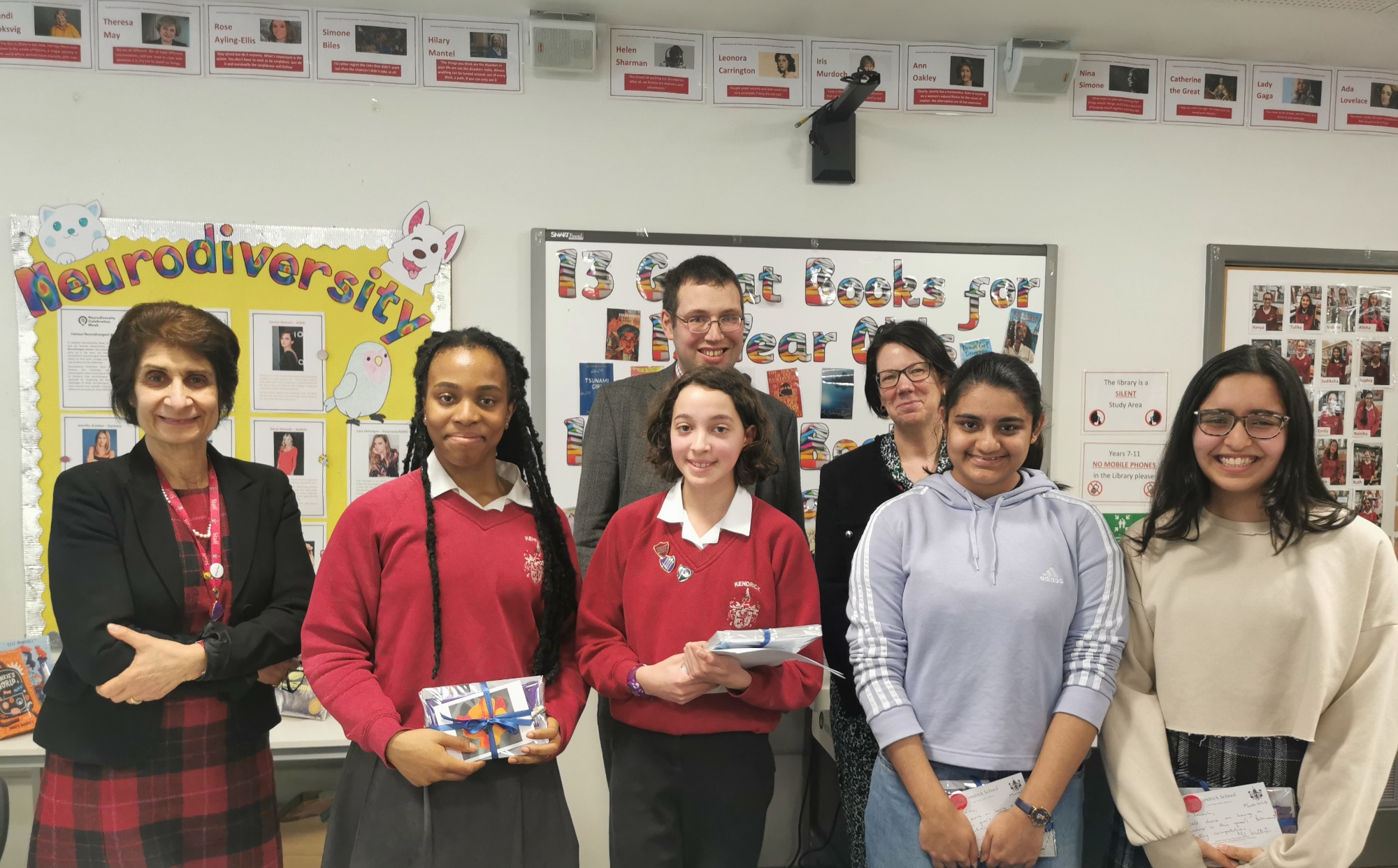Holocaust Poetry Competition 2024

On Thursday 14th March at lunchtime, the library had the pleasure of hosting the annual Holocaust Poetry Competition Presentation. This year, the theme of the competition was 'fragility of freedom', which clearly inspired many Kendrick poets. We had a wonderful range of poems submitted, which made the unenviable task of choosing the winners extremely difficult for our judges, Mr Dilley (Head of English) and Mrs Moseley (English & History teacher). Four students emerged as winners this year – Trisha and Inakshi from Year 12, Faith from Year 10 and a Year 8 student, Lara Maria.
We listened to each of their entries and were all impressed by the talent and empathy shown in dealing with such an important topic. Ms Kattirtzi presented each of our winners with their well-deserved prize.

The winner's poems can be read here
Congratulations to all those who took part.
